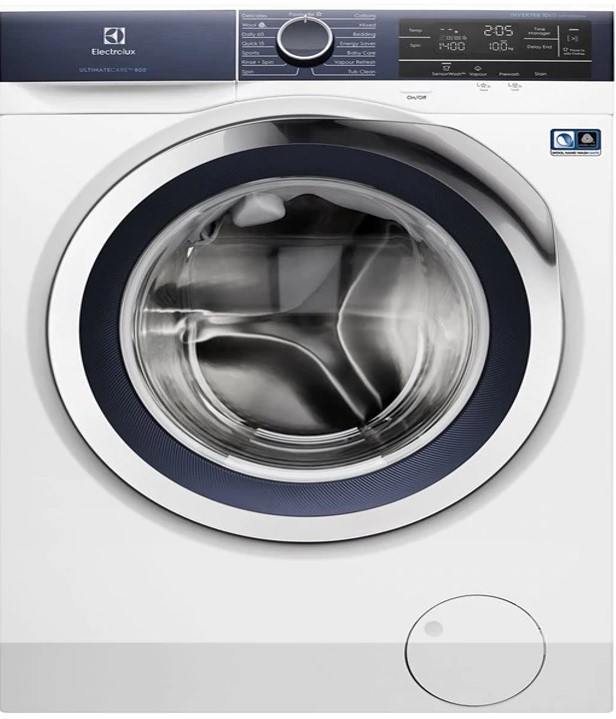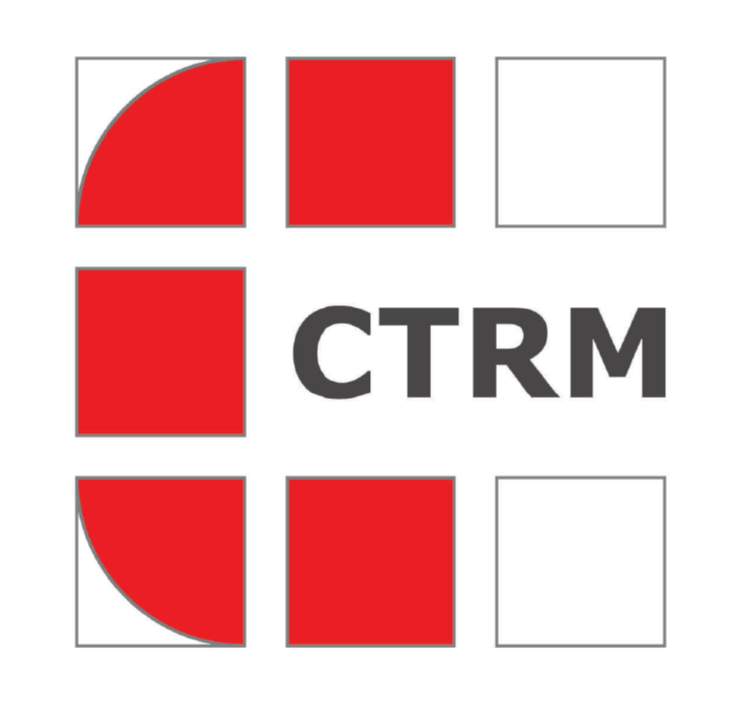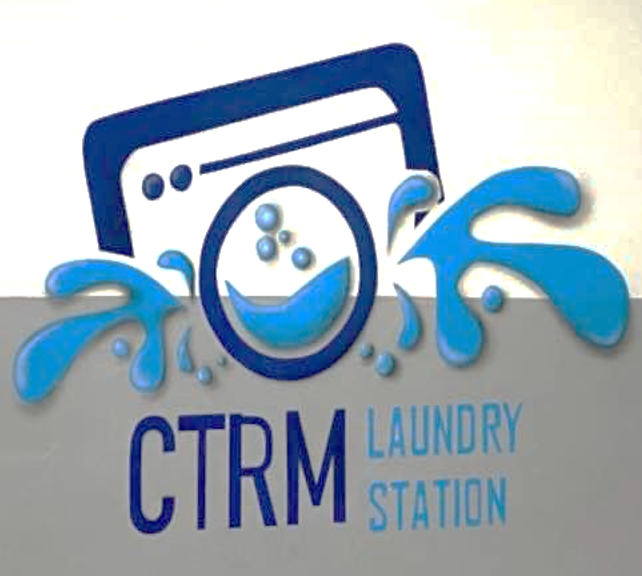Title Page
-
Site conducted
-
Microzone Area
-
Machine Name
-
Microzone Leader
-
Facilitators
-
Date & Time
-
Auditor
-
Location
Inspection Page
-
Are you AM auditor or 5S auditor
- AM auditor
- 5S auditor
AM Checksheet
1. GROUP ACTIVITY
-
a) Is there evidence that Group meetings were carried out at regular basis.<br>Document:<br>- Attendance list with signature of group members, leaders and Production <br> Manager. <br>- Memos or document used to communicate with regards to AM activities. <br><br>Definition: <br>1- None<br>2- Not consistent.<br>3- Meetings were done consistently but poor attendance (<60%).<br>4- Meetings were done consistently but poor attendance (61-99%). <br>5- Meetings were done consistently with 100% attendance.
-
b) Have the leaders, PIC machine and members being trained on AM 1-2 Awareness?<br>Document:<br>- Training attendance list. <br>- Training material, notes or manual and standard document AM 1-2 <br>- Assessment question and results. <br><br>Definition: <br>1- None<br>2- Only the leader was trained with AM Step 1-2 general awareness.<br>3- All were trained with AM Step 1-2 general awareness.<br>4- All were trained with AM Step 1-2 standard document and microzone leader can be a trainer. <br>5- All were trained with AM Step 1-2 standard document, microzone leader and PIC machine can be a trainer.
-
c) Have the leaders, PIC machine and members being trained on Safety, Health & Environment. <br>Document:<br>- Training attendance list. <br>- Training material, notes or manual <br>- Assessment question and results. <br><br>Definition: <br>1- None<br>2- Only the microzone leader was trained<br>3- Only the microzone leader and PIC machine was trained.<br>4- All were trained and microzone leader can be a trainer.<br>5- All were trained, microzone leader and PIC machine can be a trainer.
-
d) Is there evidence of fuguai detection activities being carried out? <br> Document:<br>- Fuguai tags. <br>- Fuguai summary. <br>- Problem were are written on tags. <br><br>Definition: <br>1- None . Weak. 0% Close out rate.<br>2- 1 to 5 fuguais recorded & tagged however auditor still can find other fuguais not tags. Needs improvement. ≤50% Close out rate.<br>3- 6 to 10 fuguais recorded & tagged and auditor still find other fuguais not tags. Fairly good. ≥50% Close out rate.<br>4- >10 fuguais recorded & tagged and auditor still find other fuguais not tags. Good. 100% Close out rate.<br>5- Fuguais were tagged and auditor cannot find any fuguai not tagged. Good. 100% Close out rate.
-
e) Is there machine checklist a group display board where group activities, KPIs, summaries are being displayed clearly? <br>Item:<br>- Display Boards and material/document displayed. <br>- AM machine checklist<br>- Involvement of department head in monthly audit activity<br> <br>Definition: <br>1- None<br>2- 1) Available but not updated. Many information not complete.<br>3- 1) Available but partially updated. Some information were not complete.<br>4- 1) Available, information are complete and all were updated. <br> 2) Self audit conducted by monthly basis<br>5- 1) Available, information are complete and all were updated with creative presentation. <br> 2) Self audit conducted by monthly basis with department head.
-
f) Is there AM Master Plan and group half yearly plan for AM Step 2 activities?<br>Document:<br>- TQM Master Plan <br>- AM group activities schedule. <br>- Attendance List <br>- Building maintenance activities available in Master Plan e.g. floor maintenance, wall maintenance and ceiling maintenance.<br><br>Definition: <br>1- None<br>2- Available but members were not aware hence not done.<br>3- Available and members are aware of the plans but activities were partially done.<br>4- Available and all activities were being done.<br>5- Available and all activities were done on schedule and evidence are documented.
2. HOUSEKEEPING
-
a) Is 1S being practiced and maintained? <br>-Unwanted items /FOD <br>- Identify,segregate and label of scheduled waste or general waste with <br> PIC <br>-Unsuitable / incorrect tools used by the user <br>Document: <br>- 5S Red tags. <br><br>Definition: <br>1- >5 unwanted items found and not identified.<br>2- >5 unwanted items found. They have been identified but not yet removed.<br>3- <5 unwanted items found. They have been identified but not yet removed.<br>4- No unwanted items but no evidence of sustainability. <br>5- No unwanted items system being established to ensure sustainability.
-
b) Is 2S being practiced and maintained? <br>Areas to be assessed, if applicable ( non-exhaustive): <br>- Jigs, tools and fixtures properly managed and clean (Tool mapping and logbook) <br>- Label / Signage / Footprint <br>- Identify, segregate and label of scheduled waste or general waste with PIC<br><br>Definition: <br>1- All items were not were not properly arranged and labeled. <br>2- Some items were not properly arranged and labeled.<br>3- All items were labeled but require improvement in arrangement.<br>4- All items were properly arranged and labeled.<br>5- All items were arranged and labeled. They are also clean,tidy and user <br> friendly.
-
c) Is 3S being practiced and maintained? <br><br>Document: <br>- Cleaning and disinfecting schedule <br>- Activity attendance list. <br>- Wire and hose dressing.<br>- Presence of dust, dirt, grime, oil and other contaminants.<br>- Restoration of torn and faded labels or any visual materials.<br>- General restoration on equipment or working areas.<br><br>Definition: <br>1- Overall machine & equipment are very dirty.<br>2- Some machine & equipment are very dirty.<br>3- All machine & equipment are clean and tidy.<br>4- All machine & equipment are clean and tidy. There are cleaning and disinfecting schedule.<br>5- All machine & equipment are clean and tidy. Cleaning and disinfecting actives are as per <br> schedule.
-
d) Is there layout drawing for overall shop- floor and work area. <br>Document:<br>- Layout drawings (Macro and Micro zoning). <br><br>Item:<br>- Layout lines at shop-floor. <br>- Macro and micro zoning boundaries are clear and ownership shown. <br>- Safety key elements clearly shown e.g. hazardous area, high vibration area, high voltage area and area's produce contamination.<br><br>Definition: <br>1- None<br>2- Available at some area but no endorsement by COO. <br>3- Available at some area. Endorsement by COO. A few shopfloor layout not as <br> per drawing.<br>4- Available at all areas. Endorsement by COO. A few shopfloor layout not as <br> per drawing.<br>5- Available at all areas. Endorsement by COO. All shopfloor layout are per <br> drawings.
-
e) Are Work In Progress (WIP) properly handled - FIFO, rejects are separated from good parts and correct quantities.<br><br>Item:<br>- WIP, Rejected items & Finish goods. <br>- Containers & pallet. <br><br>Definition: <br>1- No<br>2- Some were dirty and poorly handled.<br>3- All are clean but not properly handled.<br>4- All are clean and properly handled.<br>5- All are clean, properly handled and correctly recorded.
3. CLEANING
-
a) Has the fluid route and flow being identified?<br><br>Document:<br>- Drawings <br><br>Item:<br>- Hose, pipes, cables etc. <br><br>Definition: <br>1- No.<br>2- Have been identified but no visual indicators.<br>3- Being identified with arrows.<br>4- Being identified with arrows and different colours.<br>5- Being identified with arrows and different colours. There are drawings indicating the routes and flows.
-
b) Has the cleaning time showing reduction trend?<br><br>Document:<br>- Trend graph.<br><br>Definition: <br>1- No.<br>2- Yes, 10% reduction.<br>3- Yes, 10% - 20% reduction.<br>4- Yes, 20% - 50% reduction.<br>5- Yes, more than 50% reduction.
-
c) Has the cleaning standard being established?<br><br>Document:<br>- Cleaning standard document and illustrations.<br><br>Definition: <br>1- None.<br>2- Yes, for some area.<br>3- Yes, for all areas.<br>4- Yes, for all areas. Some operators have been trained.<br>5- Yes, for all areas. All operators being trained to the standards.
-
d) Has source of dirtiness or contamination being identified? Has all difficult cleaning area being identified? <br><br>Document:<br>- Fuguai tags, illustrations. <br><br><br>Definition: <br>1- None.<br>2- Yes, for some area but not marked.<br>3- Yes, for some areas and being marked<br>4- Yes, for all areas but not marked.<br>5- Yes, for all areas and being marked.
4. PROBLEM "FUGUAI" FINDING AND RESTORATION
-
a) Do the team members compile fuguai detections?<br><br>Document:<br><br>- Fuguai tags, graphs. <br><br>Definition: <br><br>1- No<br>2- Yes. Tag copies are at the display boards.C<br>3- Yes. Tag copies are at the display boards and pareto chart were available.<br>4- Yes. Pareto graphs were available for blue & red fuguai. Problem area were also <br> analyzed.<br>5- Yes. Pareto graphs were available for blue & red fuguai. Problem area were also <br> analyzed. Members are aware of the fuguai.
-
b) Has the source of dirtiness and contamination being eliminated? <br>Has the difficult cleaning area being eliminated?<br><br>Document:<br><br>- Kaizen report. <br>- Cleaning time report. <br>- Why-why analysis worksheet. <br>- Standard work sheet.<br>Definition: <br><br>1- No and no plan available.<br>2- No but plan is available.<br>3- Some are being eliminated. But no plan for others.<br>4- Some are being eliminated. Plan for others are available.<br>5- All have been eliminated.
5. O.E.E.
-
a) Is the OEE improving? <br><br>Defintion:<br><br>1- Below 80% achievement against target<br>2- 81-90% achievement against target<br>3- 91-100% achievement against target<br>4- 101-110% achievement against target<br>5- Above 110% achievement against target
6. FUTURE PLAN
-
a) Are outstanding problems being clearly summarized for action in next step?<br><br>Document:<br>- Summary of outstanding problem. <br><br>Definition: <br>1- No.<br>2- All summary are not complete. Many data/info missing.<br>3- Some summary are not complete. 20% data/info missing.<br>4- Summary are completed and being used to support request from other <br> section actions.<br>5- Summary are completed and being used to support request from other <br> section actions. 80% problems were solved.
-
b) Has the group receive any training in Step 3?<br><br>Document:<br>- Training material & attendance list. <br><br>Definition: <br>1- No<br>2- Only the microzone leader was trained.<br>3- Only the microzone leader and PIC machine was trained.<br>4- All were trained and leader can be trainer.<br>5- All were trained, microzone leader and PIC machine can be a trainer.
COMPLETION
-
Completed By : (Name &Signature)
1) 1S Sorting activity
-
Is 1S (Sort) being practiced and maintained Sub criteria 1: Non-compliances include : 1. Unneeded items i.e leftover foods 2. Foreign Object Debris (FOD) others than dust 3. Identify, segregate and label of scheduled waste or general waste with PIC 4. Unsuitable / incorrect tools used by the user 5. Masking tape at regulators
- 0) No or very little sorting activities
- 1) 3 non-compliances per macro zone whereby unneeded or misplaced items are found.
- 2) 2 non-compliances per macro zone whereby unneeded or misplaced items are found.
- 3) 1 non-compliance per macro zone whereby unneeded or misplaced item is found.
- 4) No unneeded or misplaced items found except those at red tag area(s).
- 5) No unneeded or misplaced items found except those at red tag area(s).
-
Sub criteria 2: Options available: 1. Centralized or multiple tag by zones 2. Red tag flow chart is to be approved by 5S Chairman (COO)
- 0) No red tag area available
- 2) Red tag area(s) is(are) available.
- 3) Red tag area(s) is(are)available and all red tag items are tagged.
- 4) Red tag area(s) is(are)available, all red tag items are tagged, and monitoring list is updated.
- 5) Red tag area(s) is(are)available, all red tag items are tagged, and monitoring list is updated AND 5S red tag flow chart & PIC is available.
2) 2S Set to order activity
-
Is 2S (Set to order) being practiced and maintained. Areas to be assessed, if applicable ( non-exhaustive): Area Demarcation - Footprint / Lining / Marking Visual Controls - Signage - Labels and PIC -Point of use (POU) - Personal stationery - Chemical bottle (label, service tag i.e) - Racks well maintained; tools and materials properly stacked and spaced; - Dangerous machine parts adequately guarded (follow as machine manual). Storage Location - Consumable storage - Material Inventory storage - Stationery storage - Toolings storage - Chemical storage/cabinet System establishment - FIFO - Min / max - Filing system Safety - Chemical storage or cabinet (e.g. chemical list, PIC and safety data sheet) - Chemical bottle (e.g. label and servicable tag) - First aid kit (e.g. quantity, label and PIC) - Fire fighting system (e.g. fire extingusher / hose reel and PIC) - No obstruction on fire escape route and fire fighting system (e.g. fire extinguisher/hose reel/hydrant) - Elevators, hoists, conveyors, etc. properly used with appropriate signals and directional warning signs - Adequate of PPE equipment provided, maintained, stored and used - Emergency safety showers and eye wash stations in good working condition - PMA/PMT/PMD (registered equipment) updated, valid and displayed
- 0) A lot of non compliances
- 1) ≥4 non-compliances per microzone on Set-to-order
- 2) 3 non compliances
- 3) 2 non compliances
- 4) 1 non compliance
- 5) No or negligible non compliance
3) 3S Shine activity
-
Is 3S (Shine) being practiced and maintained Areas to be assessed (non-exhaustive): 1. Wire and hose dressing 2. Presence of dust, dirt, grime, oil and other contamination 3. Restoration of torn and faded labels or any visual materials 4. General restoration on equipment or working areas 5. Rodents and smell free working area. 6. Area brightness within lux standard (refer to lux reading record) 7. POU system availability and workability.
- 0) Not being practiced and maintained at all
- 1) ≥ 4 non compliances
- 2) 3 non compliances
- 3) 2 non compliances
- 4) 1 non compliance
- 5) Most of the item are clean and duly restored
-
Improvement activities to eliminate root causes or source of contamination
- 1) has been planned
- 3) has been implemented
- 5) has been implemented with effective result
-
Routine cleaning activity with appropriate tools.
- 0) No routine cleaning and cleaning tools available.
- 5) Routine cleaning activity (start and/or end of working hour). Availability of cleaning tools & restoration activities.
-
Routine lux recording recorded
- 0) No routine of lux recording recorded.
- 5) Routine lux recording available per schedule.
4) 4S (Standardization) and 5S (Sustain)
-
Is 4S (Standardization) and 5S (Sustain) being practiced and maintained. Sub-criteria 1 (Standardization): Activity implement per standard established? (score given shall be the same as score given for criteria 2S) Note: No unneeded items (1S). Maintenance activities are available in 5S Master Schedule . Document needed: Email ,SRF, TDL,Minute of meeting
- 0) No evidence of sustaining activity
- 1) ≥4 non-compliances per microzone on Standardization non-compliances.
- 2) 3 non-compliances per microzone on Standardization non-compliances.
- 3) 2 non-compliances per microzone on Standardization non-compliances.
- 4) 1 non-compliance per microzone on Standardization non-compliances.
- 5) No non-compliance
-
Sub-criteria 2 (Sustain) : Is there any Continuous Improvement activity conducted and been revisit from previous audit/finding? 1. Audit report 2. Genba finding 3. Success Stories (Before/After)
- 2) <50% finding close (within scope) and support document raised (if any) with evidence (before/after).
- 3) >50% finding close (within scope) and support document raised (if any) with evidence (before/after).
- 4) 100% finding close (within scope) and support document raised (if any) with evidence (before/after).
- 5) 100% finding close and action towards document raised (if any) are close with evidence (before/after) and standard established.
-
Sub-criteria 3 (Building maintenance - Sustain) Compliance of condition of floor, wall and ceiling herein refers to the following matters: 1. Floor maintenance - shine, free from unneeded item, dented, flake, chirp off and others contaminants. 2. Wall maintenance - shine, free from damage, unneeded item, uneven paint, flake, chirp off, watermark (mouldy), handprint and malfunction trunking. 3. Ceiling maintenance- shine, free from dented unneeded item, flake, chirp off, watermark, handprint, leaking, missing ceiling panels
- 0) Not being practiced and maintained at all
- 1) ≥4 non-compliances or more per microzone on wall, ceiling and floor.
- 2) 3 non-compliances per microzone on on wall, ceiling and floor.
- 3) 2 non-compliance per microzone on wall, ceiling and floor.
- 4) 1 non-compliance per microzone on wall, ceiling and floor.
- 5) Most of the items are clean and duly restored for wall, ceiling and floor














